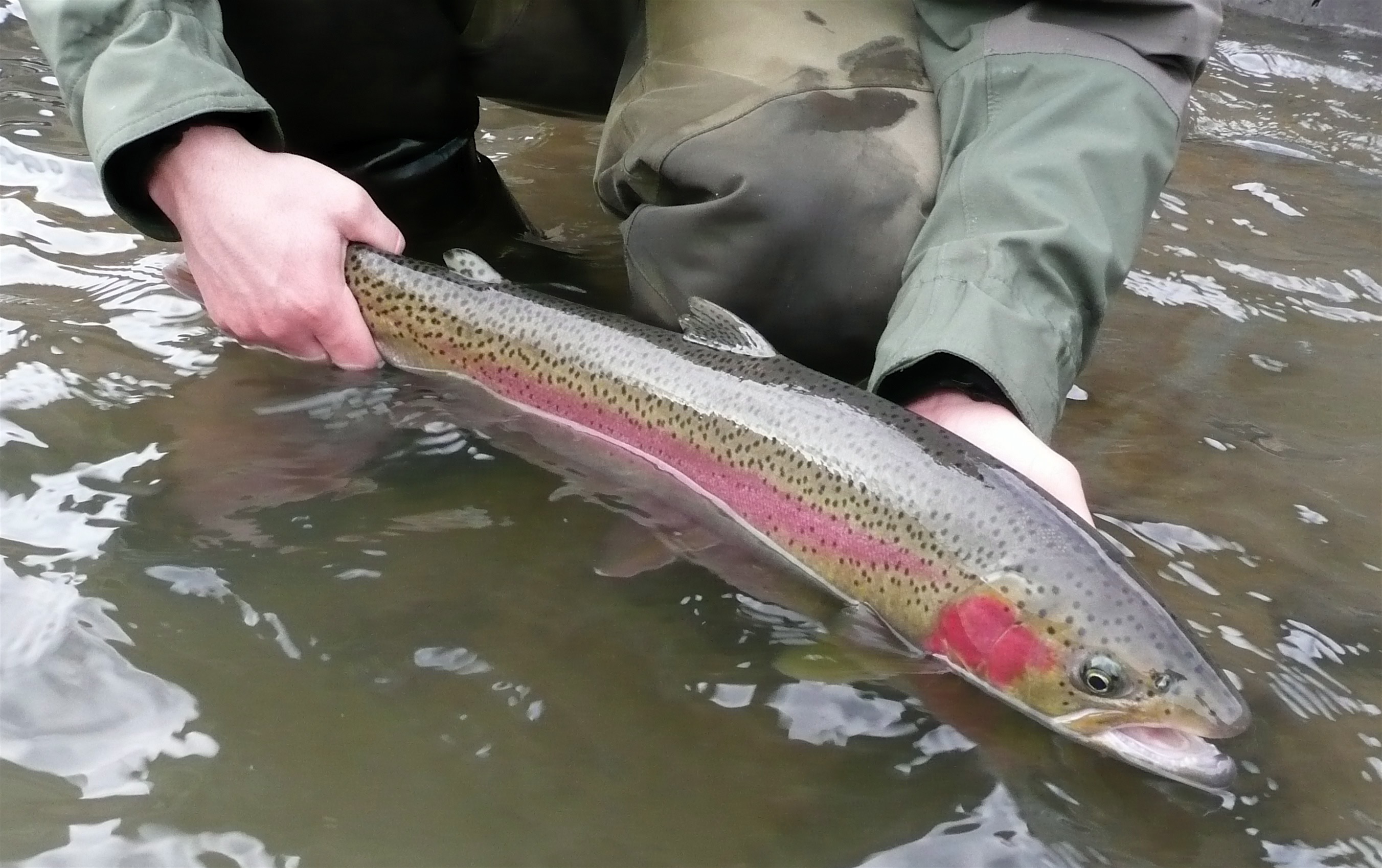Steelhead have spent most of the winter holed up in deep water waiting to make their final push upstream, and late winter and spring is when it happens. Anglers looking to cure cabin fever can get an early start on their fishing season, as well as a chance to catch big fish.

Steelhead move into headwaters of Idaho’s famous steelhead streams during late winter and early spring, which concentrates them in the upper tributaries of the Clearwater and Salmon rivers. Anglers key in on those areas for the opportunity to catch these large, ocean-going fish that are traveling upwards of 900 miles to hatcheries or spawning grounds.
As most folks know, the weather in Idaho is unpredictable this time of year. Warm weather, or rainy weather, can turn rivers into muddy torrents and make steelhead fishing difficult, so paying attention to the weather and river flows is critical to success.
Anglers can see a gauge of river flows thanks to the U.S. Geological Survey, which has gauging stations throughout Idaho. By watching the weather and the streamflows, anglers can track in real time what’s happening with the rivers.
Steelhead typically like “Goldilocks” conditions, not too high and not too low and with a little color in the water (think emerald green), but not muddy. Warming water (even just a few degrees) often offers better fishing. Fishing also tends to improve when a river recedes after a big pulse of runoff. Good steelhead anglers, or lucky ones, can catch fish in almost any conditions, but using those guidelines will help you improve your chances of catching fish.
With fish congregating in smaller headwaters and tributaries, anglers tend to follow, which means there can be crowding. In some cases, that gives steelhead fishing a social atmosphere, but there can also be intense competition for prime fishing spots.
Don’t feel like you have to stand shoulder to shoulder with other anglers to catch steelhead. There's plenty of river access and fish to go around. The upper Salmon River between Salmon and Stanley, for example, has more than a hundred miles of mostly road-accessible river where you can find places to fish.
To further fine tune your knowledge, anglers can check Fish and Game's harvest reports to see how the fishing is, but be forewarned, when the reports are good, you may have missed the prime fishing if the fish have already moved through.
Another option is to check the hatchery returns, which helps you track when fish start arriving at hatcheries and can be a good indicator of how many remain in the river nearby.
By doing a little homework and watching the weather, you can take your best shot at going fishing when rivers are in good shape and fish are there. Remember those dates because there's a fair-to-good chance it will be similar the next year.

